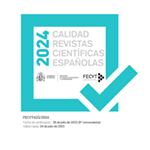Davos 1929. Ernst Cassirer and Martin Heidegger in Front of Kant
Abstract
The essay focuses on the dispute over the Kantian legacy that took place in Davos, in 1929, between Cassirer and Heidegger. The relationship between imagination, freedom and politics is at its core. Two different readings of Kant stand in a discrepancy that generates dismay. An opposition, not a hermeneutical leveling, stands between the two. It is a philosophical opposition that is intimately linked to the positivity of what is posed - and not necessarily opposed — next to the opposite position; philosophical opposition as a productive figure of the negative, because it incorporates the potential for movement and transformation that the negative has, avoiding the exclusion of one interpretation from the other. One must therefore read the confrontation or dispute between Cassirer and Heidegger in Davos as a real opposition between opposing forces, both positive, because neither philosophy derives its meaning from the negation of the other, as Kant would have said. The opposites do not contradict each other, but rather face each other according to an ontological and symbolic plan which on the one hand makes them both necessary but on the other hand opposes them in a single space of knowledge. In the background stand the black shadows that stretch over Germany and Europe. Darkness that will soon throw the opposition into the darkness, imposing a night of the world in which one philosophy will save the symbolic through the exile, while the other philosophy will abandon itself to its destructive repetition leading to the annihilation of the being.Downloads
Article download
License
In order to support the global exchange of knowledge, the journal Las Torres de Lucca. International Journal of Political Philosophy is allowing unrestricted access to its content as from its publication in this electronic edition, and as such it is an open-access journal. The originals published in this journal are the property of the Complutense University of Madrid and any reproduction thereof in full or in part must cite the source. All content is distributed under a Creative Commons Attribution 4.0 use and distribution licence (CC BY 4.0). This circumstance must be expressly stated in these terms where necessary. You can view the summary and the complete legal text of the licence.









